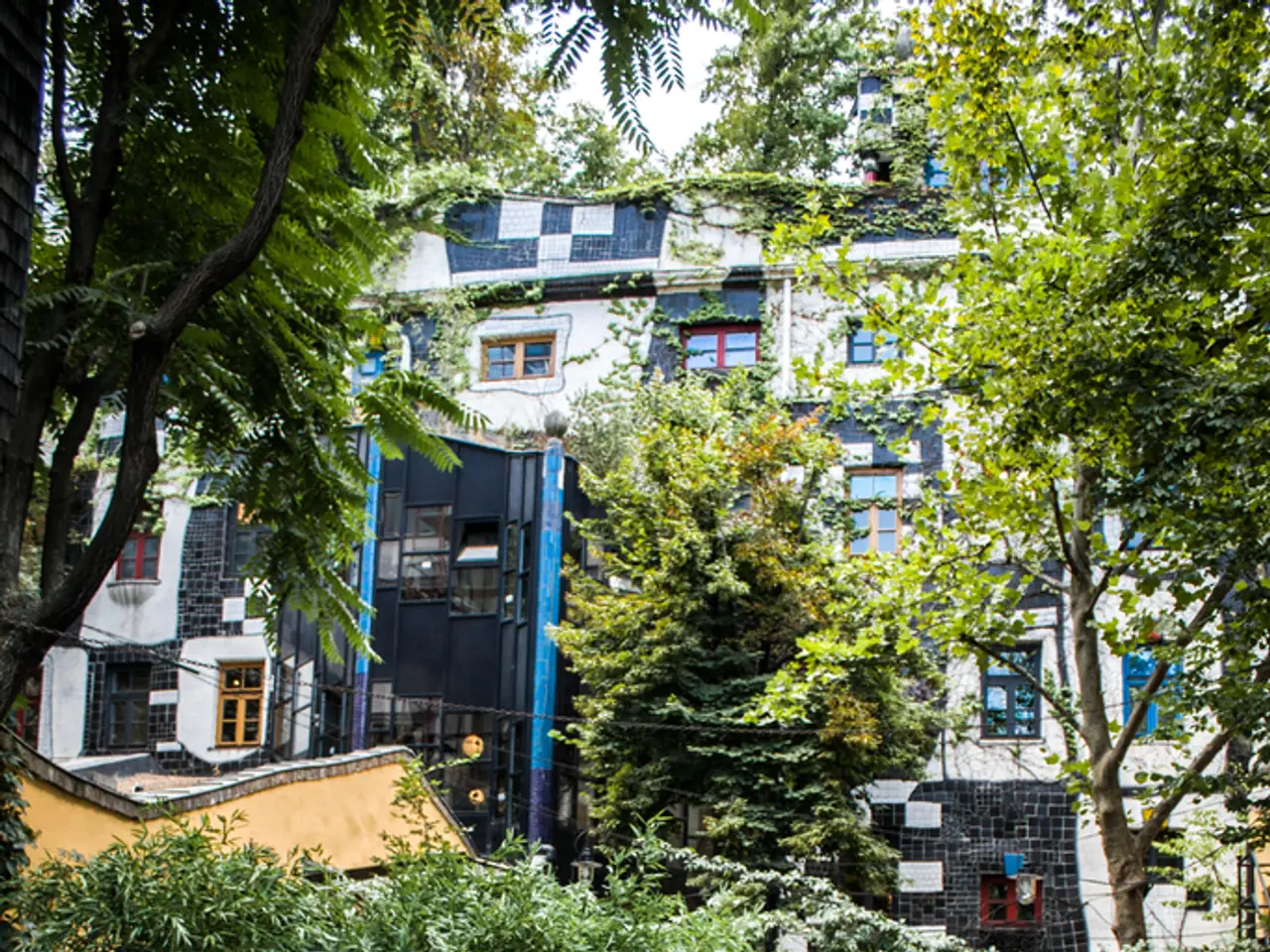Strategies for Natural Temperature Regulation in Sustainable Homes and Greenhouses via Passive Cooling Methods
In the pursuit of energy-efficient and sustainable greenhouse designs, the principles of passive cooling have emerged as a game-changer. By leveraging natural physical processes and design features, these methods aim to regulate temperature without or with minimal mechanical energy input, thereby enhancing energy efficiency and optimising plant growth conditions.
Key Applications of Passive Cooling in Greenhouses
- Thermal Mass Utilisation: The incorporation of materials like water barrels, concrete, or rocks in passive solar greenhouses allows for heat absorption during the day, which is then slowly released at night, moderating temperature fluctuations and maintaining a stable internal environment.
- Building Orientation and Insulation: South-facing walls or glazing maximise solar heat gain during daylight, while north-facing walls are well insulated to prevent heat loss. This balance helps maintain a stable internal environment.
- Natural Ventilation: Strategically placed vents or openings in the greenhouse design facilitate convection and natural air movement, removing excess heat and maintaining air circulation without the need for mechanical fans.
- Sunlight Control and Shading: Overhangs and shading devices prevent overheating during peak sun hours, balancing light availability with temperature control.
- High-performance Building Envelope: Insulation and airtight construction minimise unwanted heat transfer, reducing the need for artificial heating and cooling.
- Evaporative Cooling: In some greenhouses, passive evaporative systems like fan and pad setups or fog systems further reduce temperature by natural water evaporation, which cools incoming air.
By implementing these strategies, a controlled microclimate is created within greenhouses that supports plant health while drastically reducing reliance on electricity or fuel for heating and cooling, making the greenhouse more energy-efficient and sustainable.
Additional Passive Cooling Strategies
- Good ventilation is essential in passive cooling to prevent overheating or excessive humidity.
- Reflective roofing materials, known as cool roofs, absorb less heat, reducing the need for cooling.
- High thermal mass materials like concrete, stone, or rammed earth absorb and release heat slowly, helping keep the temperature stable.
- Insulation is crucial, especially in cold areas, to keep the inside stable.
- Materials like strawbales help maintain a steady temperature in cold areas.
- Cross-ventilation is a key strategy that works by allowing air to flow through the structure, making the space cooler and cutting down on the need for air conditioning.
- Green roofs and living walls are new ways to cool homes and greenhouses. They work like nature to keep buildings cooler and use less energy.
- Insulation in cold areas keeps the inside warm without using much energy.
- Natural materials for insulation, such as straw bales or wool, offer great thermal performance and support green building goals.
- Special foundations for greenhouses, like frost-protected shallow ones, keep the area cool and allow roots to grow.
- Adding water features, like reflecting ponds or fountains, to passive cooling designs can help cool the air by evaporation.
Deciduous trees offer shade in summer and let sunlight in during winter, potentially cutting cooling costs. Choosing the right materials for thermal conductivity is crucial in passive cooling design.
Designers can create buildings that are comfortable, energy-efficient, and harmonious with nature using passive cooling. These strategies align with broader trends in energy-efficient building design that optimise natural resources and thermal properties to achieve comfort and performance with minimal energy consumption.
[1] Passive Greenhouses (n.d.). Retrieved from https://www.passive-house-greenhouses.com/
[2] Passive Cooling Strategies for Tropical Greenhouses (2019). Retrieved from https://www.researchgate.net/publication/338274030_Passive_Cooling_Strategies_for_Tropical_Greenhouses
[3] Energy Efficient Greenhouses (n.d.). Retrieved from https://www.energy.gov/eere/ag/articles/energy-efficient-greenhouses
[4] Passive Solar Greenhouses (n.d.). Retrieved from https://www.passivesolar.org/greenhouses
[5] Passive Cooling and Heating in Greenhouses (2019). Retrieved from https://www.researchgate.net/publication/333554694_Passive_Cooling_and_Heating_in_Greenhouses
- Strategically placed water barrels, concrete, or rocks in passive solar greenhouses not only support sustainability by absorbing heat during the day and releasing it at night, but also contribute to water management through rainwater collection.
- The design principles of passive cooling in greenhouses extend beyond energy efficiency and temperature regulation, promoting biodiversity by creating a microclimate that supports a variety of plant species.
- As climate-change becomes a pressing concern, the science behind passive cooling in greenhouses offers an environmentally-friendly solution for sustainable living, reducing the carbon footprint of home-and-garden practices.
- Incorporating passive cooling strategies into architectural design, such as using reflective roofing materials, cross-ventilation, and insulation, reinforces the importance of sustainable living and environmental-science in mitigating the impact of climate-change.
- By leveraging passive cooling methods, design-conscious individuals can embrace an eco-friendly lifestyle, integrating these principles into their homes and gardens while benefiting from reduced energy consumption and a healthier environment.






